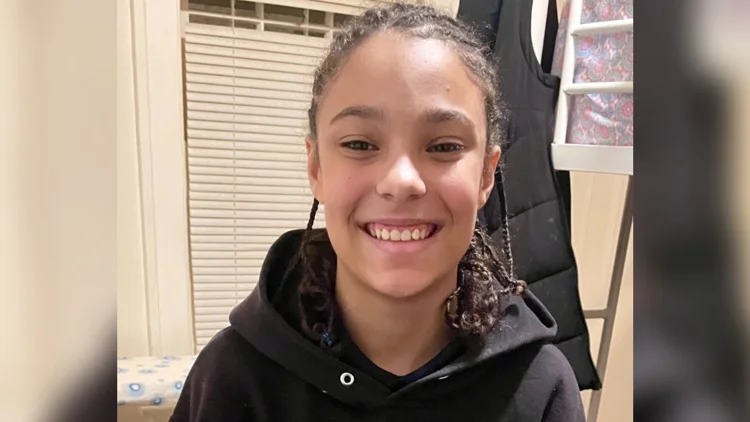The Story of Kei’Mani Latigue: A Tragic Case in Toledo

The name Kei’Mani Latigue entered the headlines in 2025, telling a painful story of a missing child, a brutal homicide, and a community demanding justice. At just 13 years old, Kei’Mani’s life was cut short under horrifying circumstances.
Disappearance & Timeline: When Kei’Mani Went Missing
Kei’Mani Latigue, a 13-year-old girl from Toledo, Ohio, was reported missing in mid-March 2025. According to news reports, the family noted she failed to show up for school and her phone went straight to voicemail.
Her grandmother, Dorothy Latigue, with whom Kei’Mani resided, discovered the house in disarray — doors unlocked, stove on, and her clothes and glasses left behind in odd positions. The grandmother later stated Kei’Mani did not typically miss school, and that the situation was unusual.
Search efforts escalated over the days. Flyers, community searches, and online appeals circulated widely. On March 24, 2025, authorities found her body in an abandoned, burned house on Miami Street in East Toledo.
Given the rapid developments, the community’s shock grew as details emerged, forcing public institutions and media to scrutinize what had happened, and whether systemic failures allowed such a tragedy.
Discovery & Autopsy: Official Determination of Death
Once Kei’Mani’s body was discovered, medical and forensic examination followed swiftly. According to the Lucas County Coroner’s Office, the manner of death was ruled a homicide, with cause stated as multiple incised wounds to the neck. The coroner pronounced her death on March 24 in the 1100 block of Miami Street in Toledo
Her remains were located in a house that had been partly burned, suggesting an attempt to conceal evidence. The extreme violence, including the depth of wounds, raised alarm among investigators and the public alike.
Through the autopsy and crime scene work, investigators collected forensic evidence, surveillance footage, bodycam material, interviews, and digital data. This evidence would later form the backbone of the prosecution’s case.
The brutality of the death, especially on a minor, mobilized public grief and intensified demands that no detail go unchecked.
Suspect, Charges & Legal Action
Shortly following the discovery, authorities pointed toward Darnell Jones (also known as Darnell Ogletree) as the principal suspect. He was alleged to have abducted, raped, and murdered Kei’Mani. The charges include abduction, rape, felonious assault, and murder, among others.
Court filings reportedly enumerate over 200 items of evidence — ranging from interviews, voicemails, phone logs, screenshots, surveillance recordings, bodycam footage, and photos. The documentation also includes statements from Jones, his girlfriend, relatives, and from Kei’Mani’s grandmother.
Jones was arrested in Columbus after a confrontation with law enforcement, in which he was shot by police. He remains hospitalized and his court appearances have been delayed. In court, he has pleaded not guilty, and a tentative trial date has been set for April 2026.
Because this is a high-profile death penalty-eligible case, the prosecution has been meticulous in building the evidence. Defense motion practice, pretrial hearings, and evidentiary disputes are expected before trial.
This legal journey is far from over, but each step highlights the gravity and complexity of prosecuting a murder involving a child under such violent circumstances.
Community Response & Systemic Critiques
The death of Kei’Mani Latigue mobilized not only grief but also public scrutiny. In Toledo and beyond, community members gathered for public memorials, candlelight vigils, and protests seeking accountability and systemic reform. The abandoned house where her body was found became a shrine of stuffed animals, candles, and messages of sorrow.
City leaders and civic groups called for investigations into how child protective services, law enforcement, and community systems had failed her. The Lucas County Children Services (LCCS) was under pressure because reports of possible abuse or neglect regarding Kei’Mani had surfaced prior to her disappearance, but had not apparently triggered removal or preventive action.
Teachers revealed that they had previously observed visible bruises and markings on Kei’Mani and had raised concerns. The school system and reporting agencies came under criticism for failing to act decisively. Public sentiment included frustration that “a lot of systems failed that poor girl.”
Some officials pledged reforms, more robust child welfare oversight, and interagency audits. The community demanded that Kei’Mani’s case be a catalyst for change, and not just another tragic headline.
Investigative Challenges, Evidence & Barriers to Justice
While the case has gained attention, numerous obstacles complicate the path to justice. First, the destruction of the crime scene (fire in the house) may have damaged or obliterated crucial evidence. The delay between disappearance and discovery also complicates establishing timelines or locating forensic traces.
Another issue is witness reliability and cooperation. Though investigators have statements from multiple persons connected to Jones and Kei’Mani’s family, memory lapses, inconsistent accounts, or fear can weaken testimony. The prosecution must persuade a jury beyond reasonable doubt under the weight of violent allegations.
Digital data like voicemails, phone logs, and activity snapshots are central — but adversarial legal teams may challenge admissibility, chain of custody, or forensic authenticity. Moreover, the defense will likely contest interpretations and push for exclusion of evidence.
Another barrier is public pressure and bias. High-profile cases risk trial by media, and both sides must ensure fair trial rights, presumption of innocence, and impartial jury selection.
Lastly, ensuring the child welfare system’s earlier interactions are fully scrutinized is complex — assessing records, internal decisions, thresholds for intervention, and possible institutional blind spots.
Broader Implications & Lessons for Child Protection
The tragedy of Kei’Mani Latigue underscores painful realities about child safety, institutional responsibility, and community vigilance. Cases like hers force societies to reckon with several difficult truths:
-
Child protective systems must be resourced, coordinated, proactive, and transparent. Reports from teachers, social workers, neighbors should trigger rigorous follow-up rather than be lost in bureaucracy.
-
Schools and educators are critical frontline observers — their referrals must be acted on swiftly, especially when bruising or behavioral changes are observed.
-
Data and technological evidence matter more than ever, but must be secured, preserved, and legally robust.
-
Public accountability is essential — community oversight boards, external reviews, and reforms help maintain trust.
-
Trauma support and victim advocacy: Families and communities impacted by child homicide need services, counseling, and protection from further harm or harassment.
-
Preventive culture: Awareness campaigns, training in mandatory reporting, and zero-tolerance attitudes toward child harm help shift a reactive posture to a preventive one.
Kei’Mani’s case is tragic and rare in its brutality, but it echoes failures more common than we wish to admit. Her death should fuel reforms — not fade into forgotten memory.
Conclusion
Kei’Mani Latigue was a 13-year-old whose life ended in a horrifying act of violence — an incised-wound homicide discovered in a burned, abandoned structure in Toledo. Her disappearance, the evidence gathered, the charged suspect Darnell Jones, and the public outcry surrounding her death have exposed gaps in child protection, reporting systems, and institutional accountability.
Though investigators are building a strong case with hundreds of evidence items, the challenges of trial, defense, legal scrutiny, and forensic clarity remain formidable. Meanwhile, the community grieving her loss continues to demand that Kei’Mani’s case be a turning point in how society protects its children.
Kei’Mani’s memory is painful but necessary — a reminder that the most vulnerable deserve unwavering care, systems should serve prevention more than reaction, and justice must never be optional.




